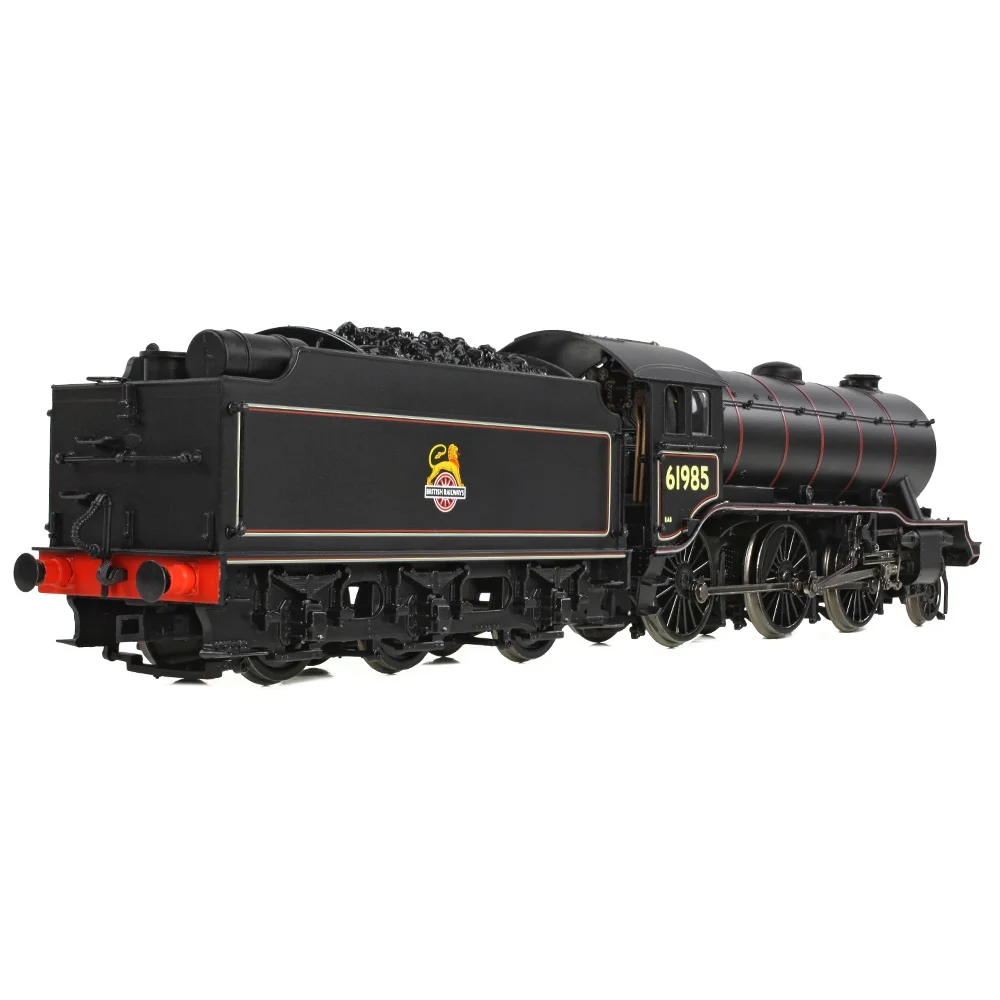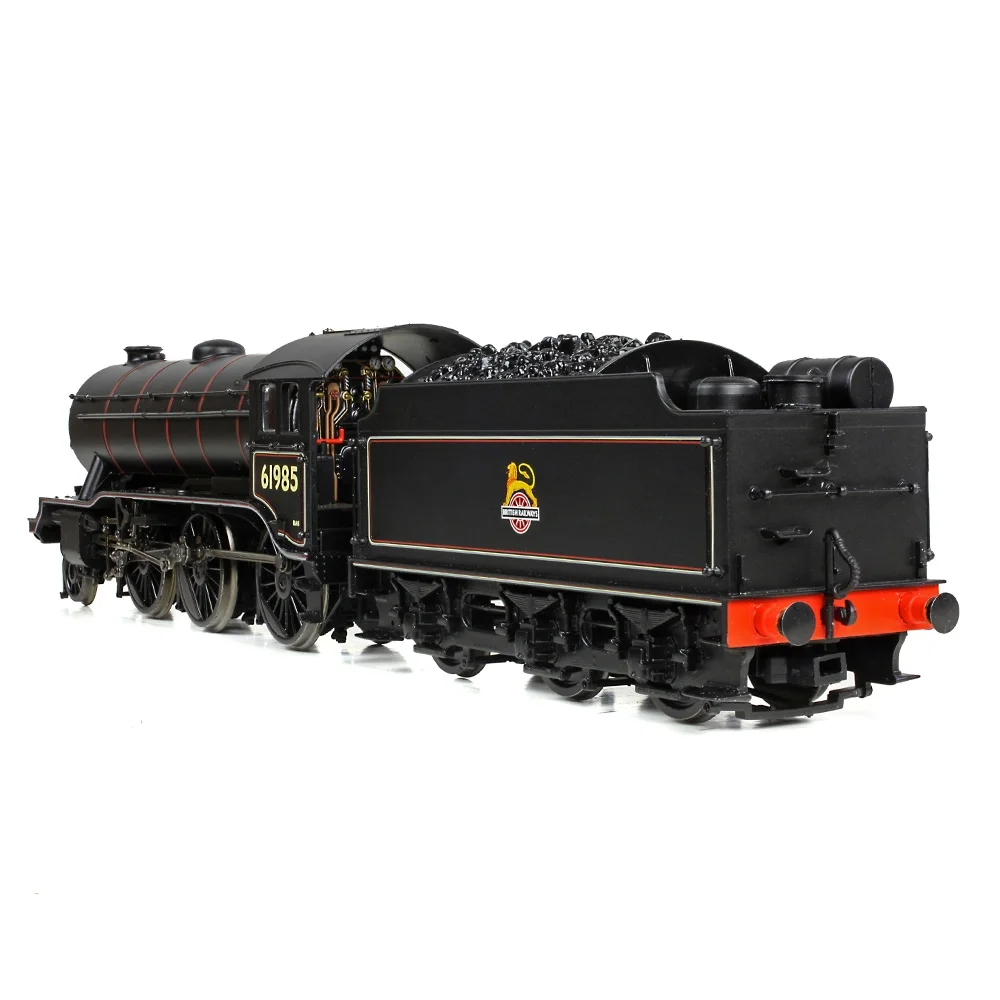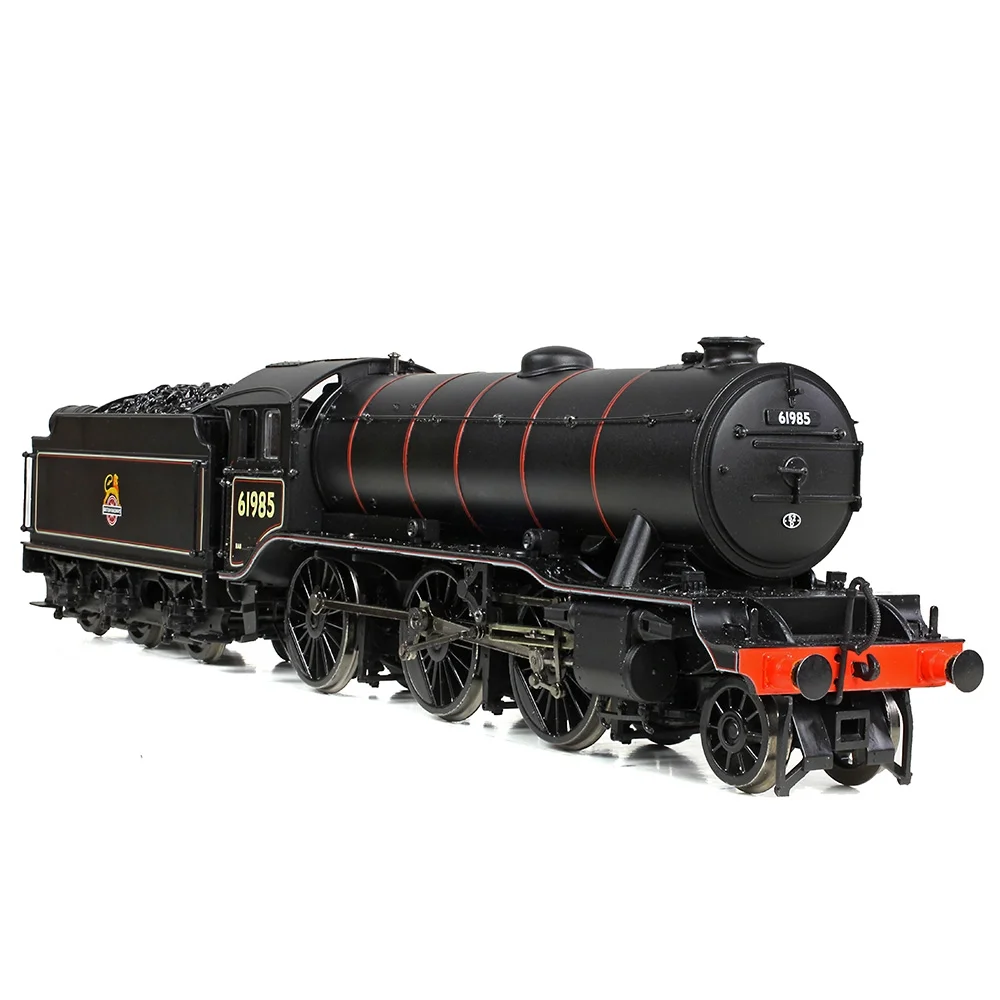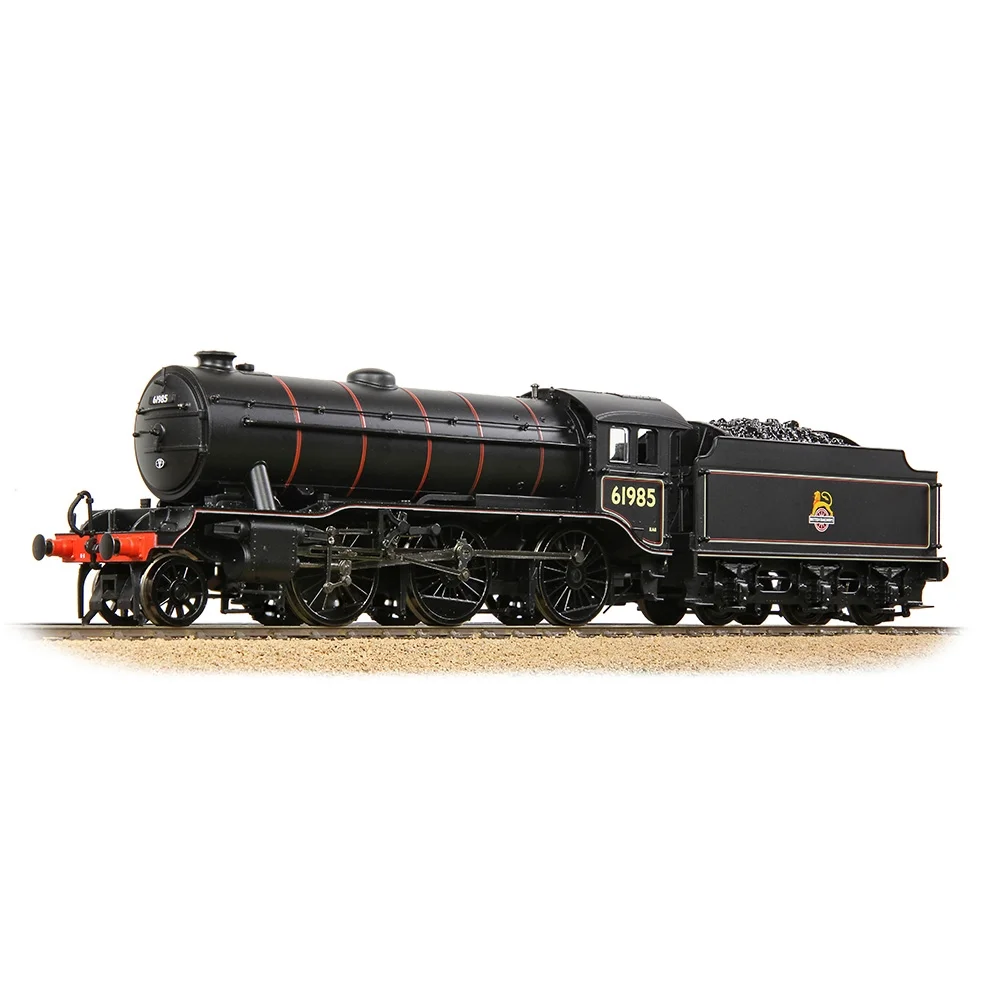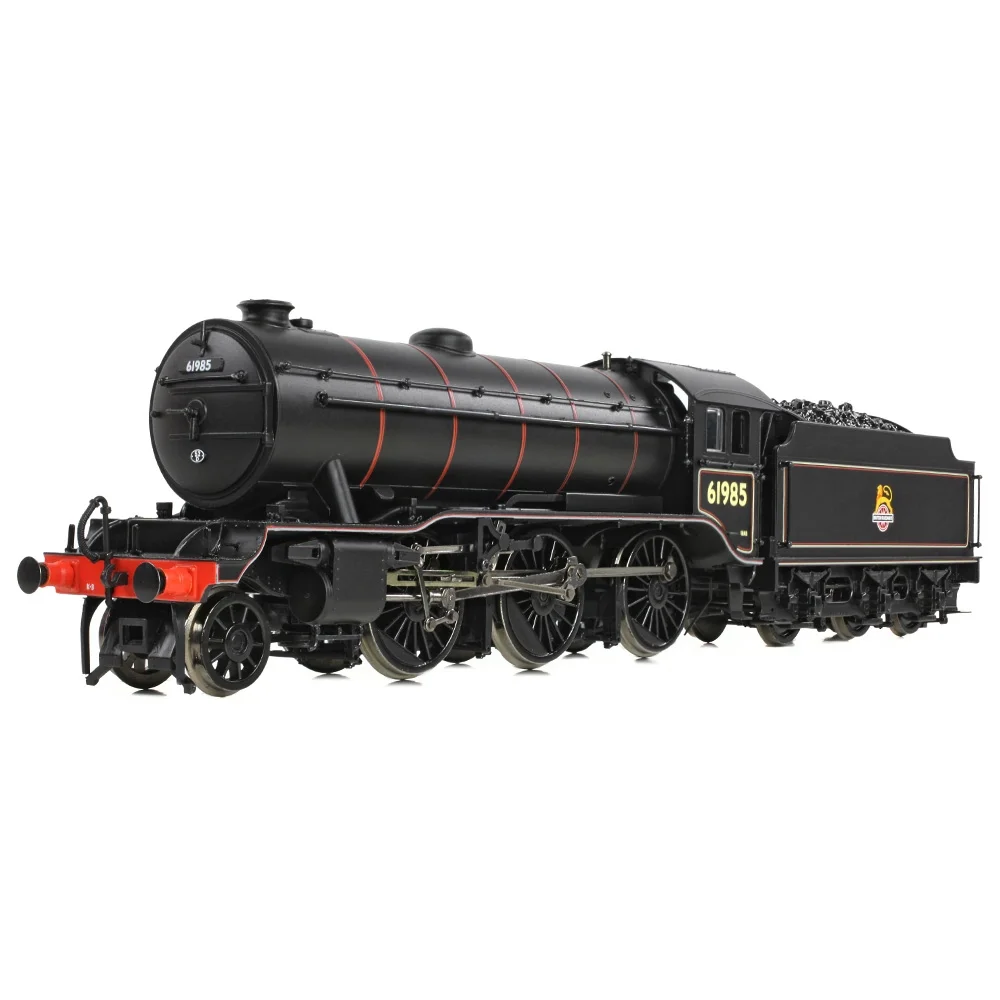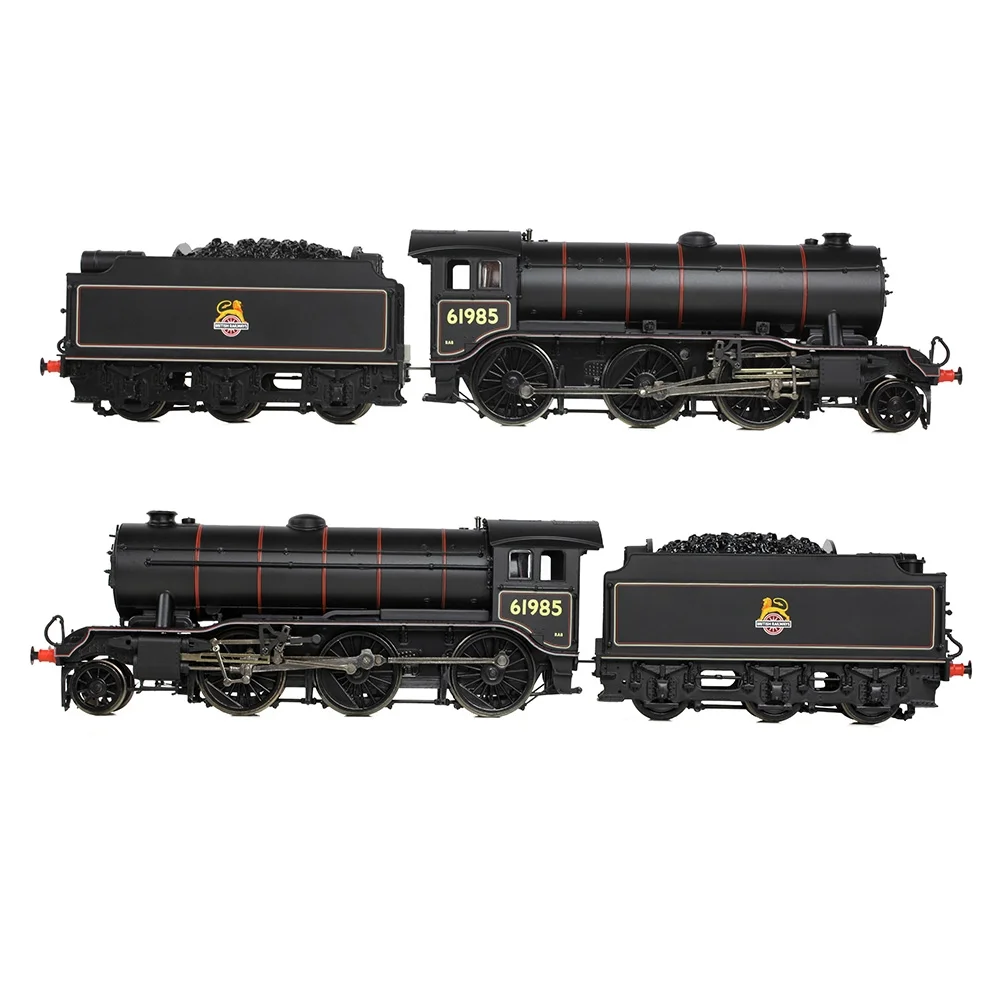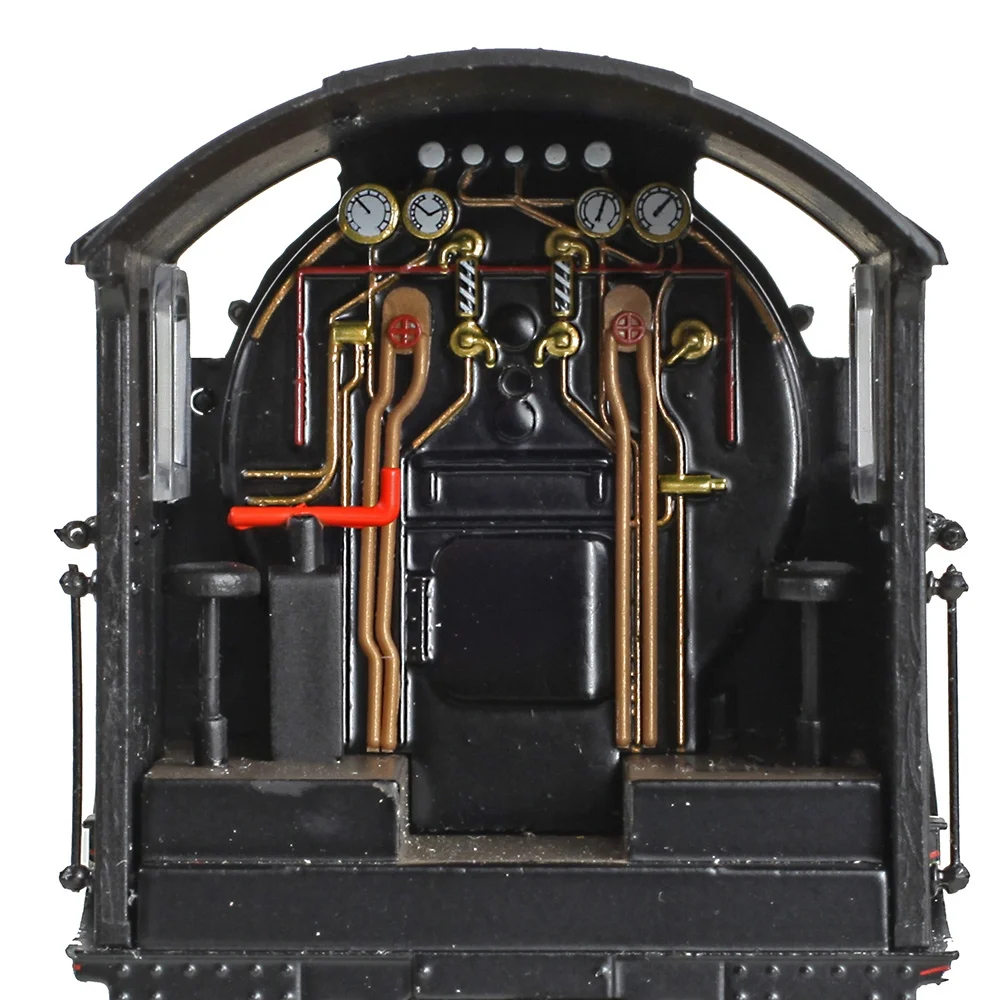Bachmann 32-276A
London & North Eastern Railway K3 61985 British Railways Lined Black with Early Emblem
Tooling
Introduced in 2004, Bachmann's tooling for the Great Northern Railway Class H4—later reclassified as the London & North Eastern Railway (LNER) Class K3—brought to life one of Nigel Gresley's most influential mixed-traffic locomotive designs. Known affectionately as the "Jazzers" due to their syncopated exhaust beat, the K3s were a hallmark of early 20th-century British railway engineering, with 193 examples built between 1920 and 1937.
Tooling Features
- Scale: OO gauge (1:76)
- Construction: Diecast running plate and chassis for weight and strength; precision-moulded plastic bodyshell with separately fitted details
- Detailing: Includes turned brass safety valves, metal handrails, lamp irons, sprung buffers, brake rigging, sandpipes, and fully detailed cab interiors
- Couplings: NEM pockets with tension-lock couplers
- Tender: Adjustable drawbar, realistic coal load, separately applied details including lamp irons and water scoop
Mechanical & Electrical
- Motor: 3-pole motor located in the locomotive
- Drive: Loco-driven wheels with pickups on driving wheels only
- Minimum Radius: Compatible with second radius curves (438mm)
- Weighting: Metal components within chassis and tender for improved adhesion
- Lighting: No factory lighting fitted
DCC Capability
- Socket: 8-pin DCC-ready
- Sound Installation: Compatible with Zimo MX648/MX645 decoders and stay-alive capacitors; speaker installation possible with boiler weight removal
Liveries Produced
- LNER Black (1923–1947)
- LNER Green (1923–1947)
- BR Black with Early Emblem (1949–1957)
- BR Black with Late Crest (1957–1968)
Reviews & Commentary
The Bachmann K3 has been praised for its smooth running, accurate proportions, and high-quality detailing. Reviewers have noted its impressive pulling power and weight, though some have commented on minor issues such as wheel size discrepancies and livery detailing. Social media and forums have discussed the accuracy of lining and tender details, with general consensus favouring the model's overall authenticity and performance.
Media Coverage
- Sam'sTrains Unboxing & Review – Detailed examination and performance test
- Leopard Street Model Railway – DCC installation and running
- OO Neal Restoration & Weathering – Custom detailing
Additional Notes
The tooling has supported multiple variants including stepped and flared tenders, and has been used in special releases such as the Stockton & Darlington centenary model. Enthusiasts have also successfully converted models to EM gauge and installed advanced DCC sound systems, showcasing the tooling's flexibility and enduring popularity.
Bachmann's Description & Specifications
The Branchline model of Gresley’s 2-6-0 mogul employs a diecast running plate and locomotive chassis to provide an impressive weight, ensuring that the model’s strength and versatility is true to prototype. Meanwhile, those components produced in plastic are precision moulded, with details such as rivets and boiler bands crisply reproduced. Separate parts are then added to enhance the authenticity of the model further, from the metal handrails and lamp irons to the safety valves and sprung buffers, each of which are turned brass. Within the cab, controls, dials and pipework are all moulded authentically and decorated accordingly. Multiple parts are added to the locomotive’s chassis, with brake blocks and brake rigging, footsteps and metal wire sandpipes all fitted separately.
Moving to the tender and the locomotive to tender drawbar is adjustable to suit different layout conditions whilst the tender itself is finely moulded, with several separately applied details including the lamp irons, handrails, handwheels and sprung metal buffers. A realistic coal load is included, with the empty coal space modelled below, whilst the tender chassis includes brake rigging and the water scoop.
The K3 was one of the LNER’s most successful designs, quickly becoming a Group Standard design following Grouping in 1923, and we are delighted to present this Bachmann Branchline model of the LNER stalwart which returns to the range as No. 61985 in BR Lined Black livery.
The livery application is what really brings this new K3 to life, with a rich application of black paintwork augmented by the lining which is applied with pinpoint precision. Numbering, lettering and the BR Early Emblem is reproduced in high definition, resulting in a model fit for any collection.
MODEL FEATURES:
- Bachmann Branchline OO Scale
- Era 4
- Pristine BR Lined Black (Early Emblem) livery
- Running No. 61985
- Group Standard Tender
- Adjustable Tender Drawbar
- Powerful 3 Pole Motor
- NEM Coupling Pockets
- Sprung Buffers
- Accessory Pack
- Equipped with a 8 Pin DCC Decoder Socket – Recommend Decoder item No. 36-566A
- Length 250mm (over couplings)
Class & Prototype
- Class: London & North Eastern Railway K3
- Traction: Steam
- Built: 1920
- Total Built: 193
- Running Number: 61985
The GNR Class H4, later LNER Class K3, was Nigel Gresley's ground-breaking 1920 design that revolutionized British mixed-traffic locomotive operation. These distinctive 2-6-0 "Jazzers" featured unprecedented 6-foot diameter boilers, innovative three-cylinder layout with conjugated valve gear, and exceptional versatility handling both express passenger and heavy freight services. Built between 1920-1937 with 193 examples constructed, they proved capable of hauling 20-bogie passenger trains during the 1921 coal strike while maintaining economical operation. The syncopated exhaust beat from their three-cylinder arrangement earned the affectionate "Jazzers" nickname, reflecting the jazz music era of their introduction. Tragically, the entire fleet was scrapped 1959-1962 with no survivors, though a new-build project announced in 2018 promises their return to steam. These historically significant locomotives influenced all subsequent Gresley designs and remain popular subjects for OO gauge modelling through excellent Bachmann reproductions.
Operator & Livery
- Operator: British Railways
- Livery: Lined Black with Early Emblem
- Era: 4 - British Railways Early Emblem
British Railways transformed Britain's fragmented rail network into a unified national system following nationalisation on 1st January 1948. Created from the "Big Four" companies under the Transport Act 1947, BR operated most of Great Britain's railways until rebranding as British Rail in 1965, managing over 20,000 route miles and inheriting nearly 20,000 locomotives of diverse designs.
The organisation pioneered standardisation through its revolutionary BR Standard locomotive programme (1951-1960), producing 999 advanced steam engines under Robert Riddles' direction. These included the versatile Britannia Pacifics, mighty 9F freight engines, and mixed-traffic classes that incorporated the best features from all predecessor companies. The 1955 Modernisation Plan accelerated diesel and electric traction development, creating fascinating mixed-traction operations.
Notable achievements included establishing unified locomotive classification systems, introducing distinctive corporate liveries, and managing the complex transition from steam to modern traction. BR's six regional structure preserved operational diversity whilst enabling standardisation of practices, signalling, and rolling stock that had eluded private enterprise for over a century.
The BR era represents steam traction's final flowering alongside emerging diesel technology, creating unparalleled locomotive variety. Today, this heritage remains highly popular with railway enthusiasts through extensive preserved fleets, heritage railway operations, and comprehensive model ranges from manufacturers like Hornby, Bachmann, and Dapol, making BR subjects essential for authentic post-war British railway modelling across all scales.
British Railways' lined black livery was designated for mixed-traffic and secondary passenger locomotives from 1949, following pure LNWR style with black base colour and elaborate red, cream (off-white), and grey lining patterns. The lining specification comprised 5/8" grey, 1/8" cream, 1½" black, and ¼" red bands, with the layout consistent with LNWR practice including deep and shallow valances lined along bottom edges only, unlike green engines. The first lined black engines appeared in August 1948 when Hall 5954 appeared so painted, becoming one of the first to carry the "Lion and Wheel" emblem around the same time.
A wide range of engines was eligible for this livery, from powerful V2s and Counties down to tiny Southern Terriers, encompassing County, Hall, Grange, Manor, Saint, Prairie tanks, and numerous pre-grouping designs of varied shapes and sizes. This created many variations and interpretation problems due to the diverse locomotive types involved, with regional differences in splasher lining treatment—the Eastern Region used red-only splasher lining, whilst the Southern Region evolved from inset to edge lining styles. The emblem was positioned centrally on tender sides above the middle axle box, with the Western Region favouring larger sizes on tenders and bigger tank engines. An interesting period detail saw number plates routinely painted red from late 1949 to early 1952, adding colour contrast to the otherwise black scheme. This livery represented BR's commitment to standardising mixed-traffic operations whilst maintaining the decorative traditions that distinguished passenger-rated locomotives from plain freight engines.
